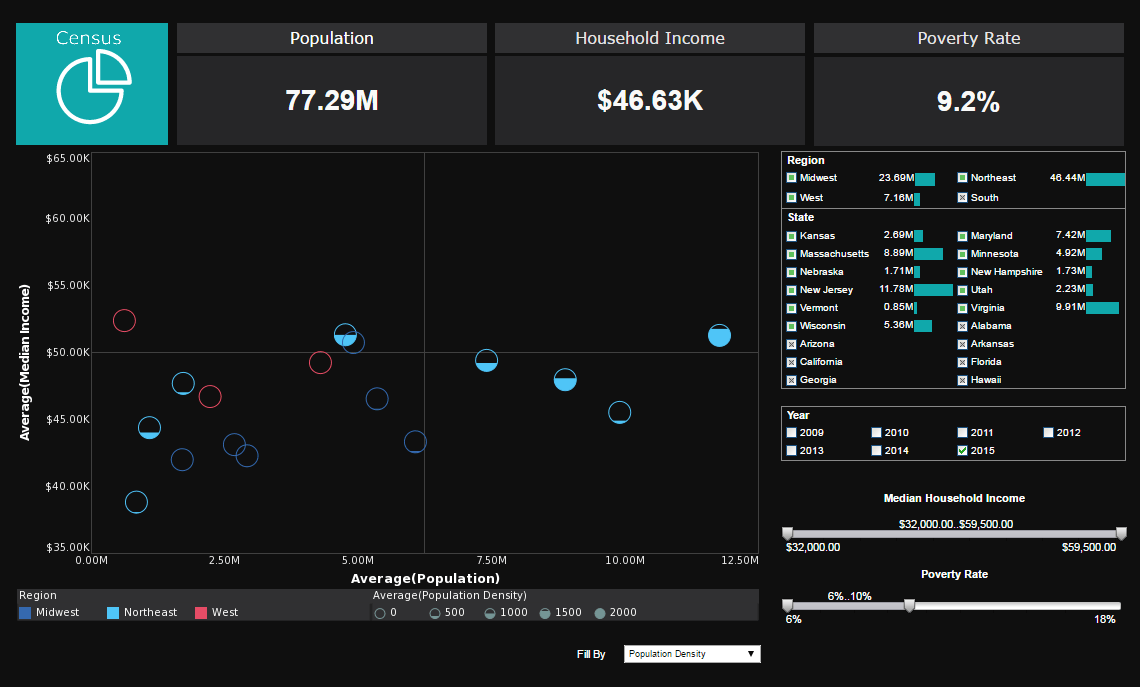Key Performance Measures in Government
Below is the continuation of a transcript of a Webinar hosted by InetSoft on the topic of "Performance Management in Government." The presenter is Christopher Wren, Principal Consultant at GPM.
Christopher Wren (CR): You know how too often there is still a disconnect between what employees are doing daily and what is the right key performance measure to be watching at the strategic level. We really want to bring those two pieces together. I want to share with you what the recent mindset has been in some government agencies.
Here’s a quote from someone I talked to: “My boss really wants us to start measuring something, but he doesn’t believe in strategic planning. He says it’s a waste of time.”I am not going to say what agency it was or who said it, but I just think it's still remarkable that after all this time many people and especially some people in leadership positions are not putting planning and measurements together.
In fact, they are still really just counting things, and I think we all understand that just counting is not performance management. Remember that planning and measurement are really two sides of the same coin. If you begin a planning exercise, from day one, think to yourself and with the group, how would we measure these goals.
Before we commit to these goals, before we commit to these objectives, are they measurable, and if they are really not measurable and it becomes very hard to figure out whether or not we are successful in implementing a program, then we want to rethink that process.
Plan and Measure
Plan and measure. At the same time we should look at it from the reverse angle. Let's measure what's in our plan. This is something that I think we can't stress enough because even today we get people like this person quoted before who really make it very clear that strategic planning is something many people don’t really see the value in. They know the measurement is important, but they don’t see the connection.
For many years, as I said before, I worked with GSA, and as I think many of you know the GSA is the government’s landlord. The GSA owns many buildings and lease many other buildings. So we had a large variety of measures that were already in use in the buildings and facilities by the management community. We were able to benchmark and baseline against other organization’s private landlords.
On the other hand, many government agencies don’t have that luxury. I have been doing a lot of work in the science and technology and research areas and there are no peer groups for the government in some of those areas. So who you are and what influences you has a direct impact on what you measure and what targets you set. Some government agencies don’t have the luxury of benchmarking against other organizations.
Case Study of the Bureau of Land Management
The Bureau of Land Management (BLM) plays a crucial role in managing and conserving vast stretches of public lands across the United States. In planning its activities, the BLM employs a comprehensive approach that integrates various factors such as environmental sustainability, resource management, and public engagement. One key aspect of its planning process involves assessing the needs and priorities of local communities while also considering broader regional and national interests. This often entails conducting thorough environmental assessments and consulting with stakeholders to ensure that the proposed activities align with conservation goals and regulatory requirements.
To effectively measure the outcomes of its activities, the BLM utilizes a range of metrics and monitoring techniques. These may include tracking changes in land use patterns, assessing the health of ecosystems, and evaluating the socio-economic impacts of resource development projects. By collecting and analyzing data over time, the BLM can gauge the effectiveness of its management strategies and make informed decisions about future actions. Additionally, the BLM often collaborates with academic institutions, research organizations, and other governmental agencies to leverage expertise and resources in monitoring and evaluation efforts. In recent years, there has been growing recognition within the BLM of the importance of incorporating principles of adaptive management into its planning and measurement processes.
This approach acknowledges the inherent uncertainty and complexity of natural systems and emphasizes the need for flexibility and responsiveness in decision-making. By adopting adaptive management principles, the BLM aims to iteratively adjust its strategies based on ongoing monitoring and feedback, thereby enhancing the resilience of ecosystems and improving the long-term sustainability of land management practices. Overall, through careful planning and rigorous measurement, the Bureau of Land Management strives to fulfill its mandate of conserving America's public lands for the benefit of present and future generations.

